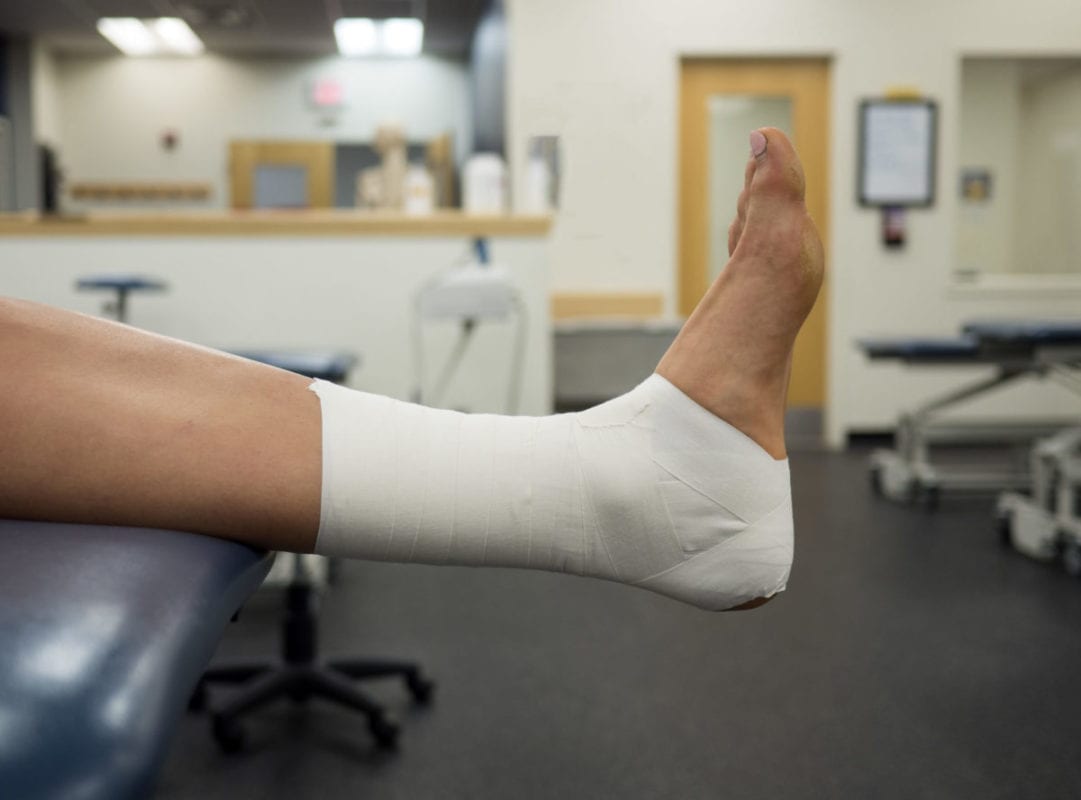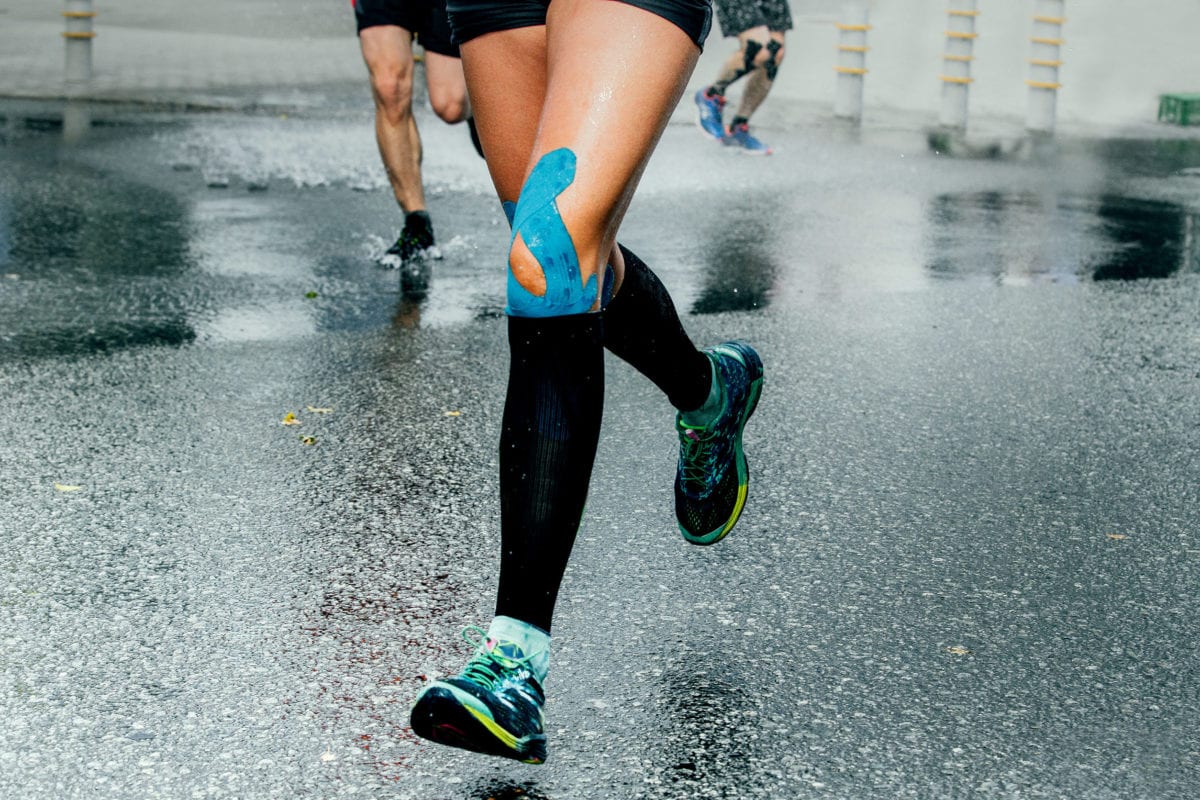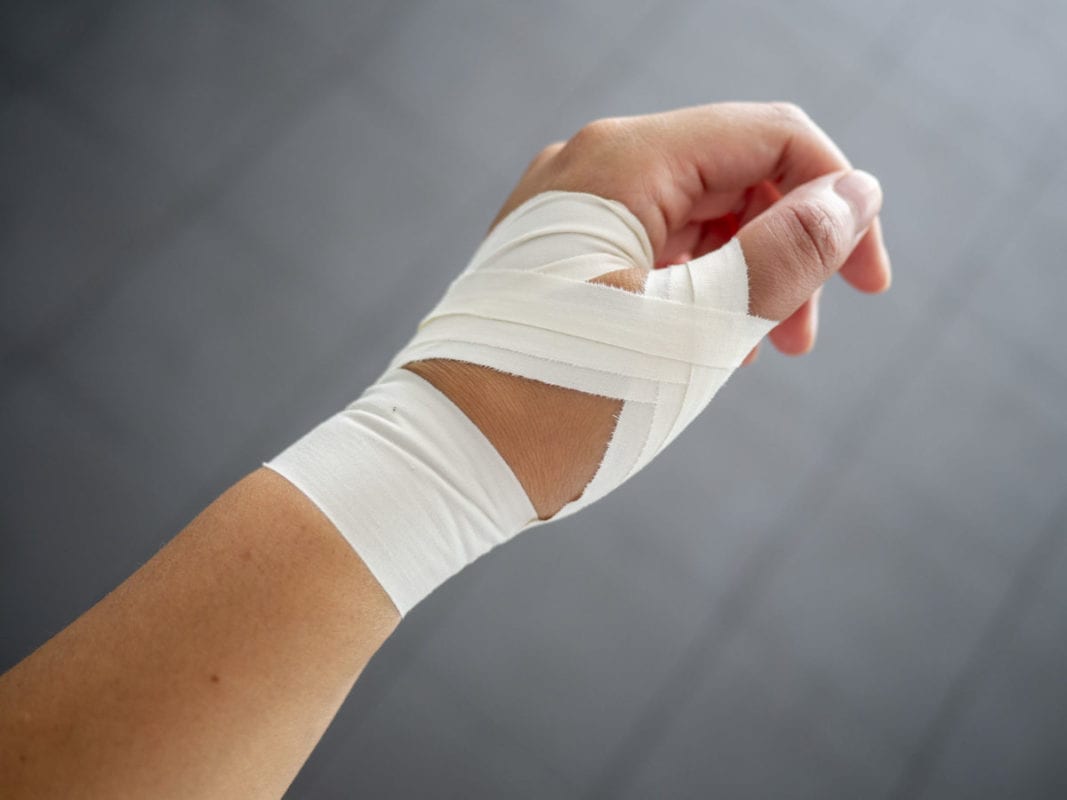
The differences between Kinesiology Taping & Sports Taping
By Georgina King BSc, SST
Many people have heard of the terms ‘taping’, athletic taping, sports taping or kinesiology taping, but are often unsure of what these terms mean or when specific taping methods or modalities should be used within injury treatment.
This blog aims to explain the differences between the modalities of Kinesiology taping and conventional Athletic taping.
Athletic Taping
Athletic taping is often also referred to as Taping and Strapping, Sports Taping, or Zinc Oxide Taping.
This method of taping is mainly used in sporting scenarios and for the treatment of injuries within a clinical setting. Alongside the treatment of injuries, it can be useful to help reduce postural related pain.
Kinesiology Taping
Kinesiology Tape is elasticated tape, which is often brightly coloured, and sometimes is printed with different designs or logos on. This tape was first developed by Japanese Chiropractor Dr. Kenzo Kase in the 1970’s with the aim of reducing muscular related pain and discomfort.
Since it’s launch in the 1970’s it has become popular amongst athletes and has been found to have multiple benefits, some of which include: proprioceptive facilitation; reduced muscle fatigue; muscle facilitation; reduced delayed-onset muscle soreness; pain inhibition; enhanced healing, such as reducing oedema, and improvement of lymphatic drainage and blood flow.


What are the differences?
Both Kinesiology Tape and Athletic tape can be used for the treatment of injuries and to reduce muscular related pain or discomfort. But the taping properties, application and aim of use can differ quite widely.
The following information aims to outline the similarities and differences between the two taping styles.

Composition of Tape
The only resemblance between the two taping compositions is they are generally made from cotton. Kinesiology tape is colorful thin, elastic, and breathable tape, which is made from 100% high quality cotton with a hypoallergenic acrylic adhesive and is cut to size with scissors.
Whereas, conventional athletic (Zinc Oxide) tape is traditionally a non-stretch, rigid tape that is usually white or tan in colour, with thicker and inflexible properties. This tape is also made from cotton, rayon viscose fabric with latex free hypoallergenic adhesive. But it’s serrated edges allow therapists to tear both width and lengthways without the need of scissors.
Method of Application
Conventional athletic tape (Zinc Oxide) is used as a mechanical method of taping to provide a firm support for joints and muscles, though restriction of movement or immobilization, depending on the taping technique and injury. Additionally, Zinc can be used on joints to prevent common injuries, especially when used within a sports scenario. For example, when watching a rugby march you will often see players with athletic tape in their knees, and around their ears.
Conventional athletic taping methods include – Ankle sprain, Ligament tears in the knee, anterior or posterior shoulder instability, along with wrist and hand support and thumb taping.
This taping methods is also useful for helping to protect wounds, prevent blisters, and to protect the hands and fingers in racket-based sports or any activity where a firm grip is required.
Kinesiology taping on the other hand, is used as a therapeutic taping method, with definitive rehabilitative techniques to facilitate the body’s natural healing process. Taping application provides support and stability to muscles and joints without restricting the body’s range of motion. Kinesiology Tape can be cut into a single “I” strips or modified into the shape of an “X” or “Y” or other specialised shapes.
The shape of the tape, direction of tape and the amount of stretch placed on the tape, can all be manipulated, in order to help to re-educate the neuro-muscular system, reduce muscular related pain and inflammation, to optimise performance, prevent injury, or to promote circulation and healing.
Kinesiology taping methods include: inhibition of an overused muscle, facilitation of weak muscles, postural hold and mechanical correction, pain correction, ligament and tendon correction, and circulation and lymphatic channeling.


How long does it last during activity? Wear time
Conventional athletic tape (Zinc) restricts and compresses the injury site. Due to tape breathability, restriction and friction wear time can be limited to 25 minutes to a couple of hours.
Kinesiology tape, on the other hand, is both flexible and breathable with a strong waterproof adhesive. This means that it can be worn for several days without skin irritation or other complications.
Therapeutic Function
Conventional Athletic (zinc) tape has two key functions, which are:
- To provide support,
- Limit the range of motion in injured or unstable joints or muscle groups.
This provides the injury site with time to heal, whilst feeling supported.
Kinesiology tape provides a number of therapeutic benefits including:
- Pain relief
- Reduction of inflammation, edema, swelling, bruising
- Re-activation of inhibited muscle fibers
- Accelerated recovery from exercise
The table 1 (below), aims to summarise the key differences between these two popular taping methods.
Table 1: Key differences between Kinesiology and Athletic Tape
|
Kinesiology Tape |
Athletic (Zinc Oxide) Tape |
|
Elastic and breathable |
Rigid – high tensile strength |
|
High Quality Cotton, hypoallergenic acrylic adhesive |
Cotton, rayon viscose fabric with latex free hypoallergenic adhesive |
|
Scissors required |
Serrated edges – tear width and length ways |
|
Rehabilitation technique to facilitate natural healing process |
Limit/ restrict range of movement around a joint |
|
Duration: 2-3 days |
Duration: 25 minutes – 2 hours |
|
Positive physiological effects on the skin, lymphatic and circulatory system, fascia, muscles, ligaments, tendons, and joints |
Proven to immobilise an injured joint |
|
It can be used in conjunction with a multitude of other treatments and modalities within your clinic/ sporting environment |
Can be used in conjunction with other treatments within clinic and sporting environment
|
|
Effective during the rehabilitative and chronic phases on an injury as well as being used for preventative measures |
Effective pre-game taping for weak, unstable joints, during sporting events and post event |
If you’re a therapist and would like to train in either of these taping modalities, Core Elements Training run regular Face to Face and Live Online CPD courses in Kinesiology Taping and Sports Taping and Strapping (Athletic, Zinc Oxide taping). Both the Face to Face and Live Online courses are accredited and insurable for use within a clinical and sports setting.
To find out more visit our course page at: www.coreelements.uk.com
By Georgina King BSc, SST
Georgina graduated from the University of Worcester with a First Class Honors degree in Sports Therapy. During her time at University Georgina worked with Worcester Warriors Rugby and Academy, Worcester Wolves Basketball and National Taekwondo providing pitch side medical cover and clinical work.

